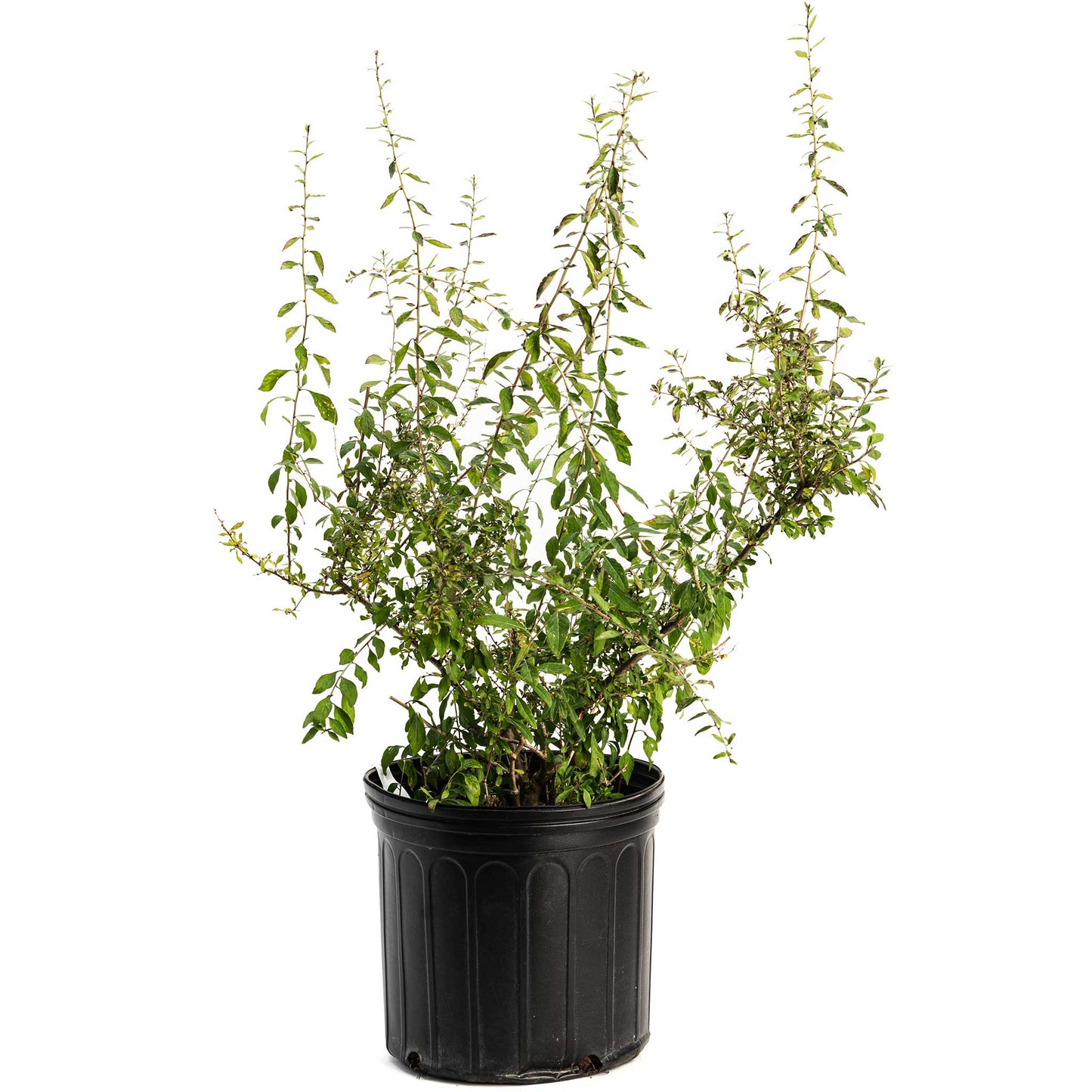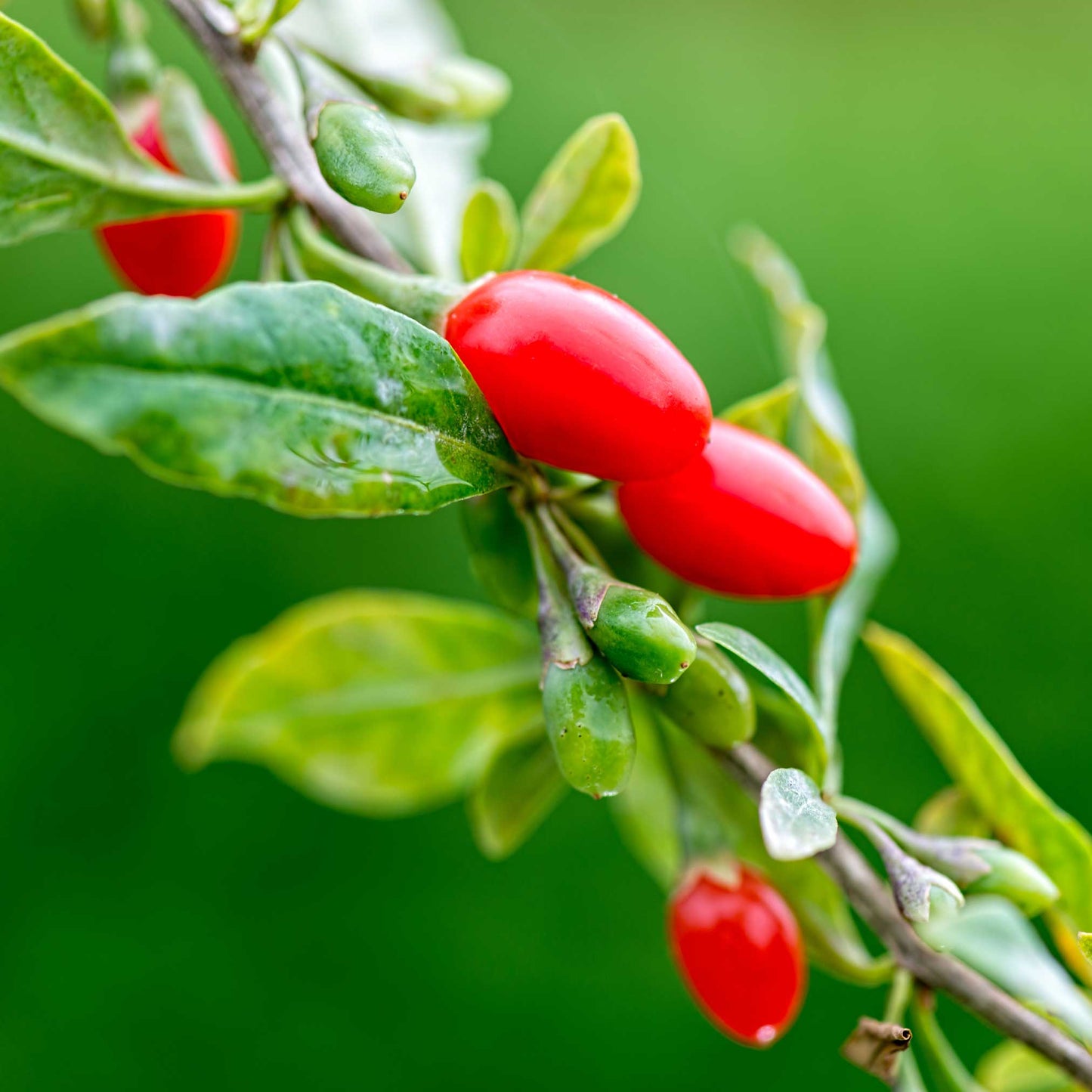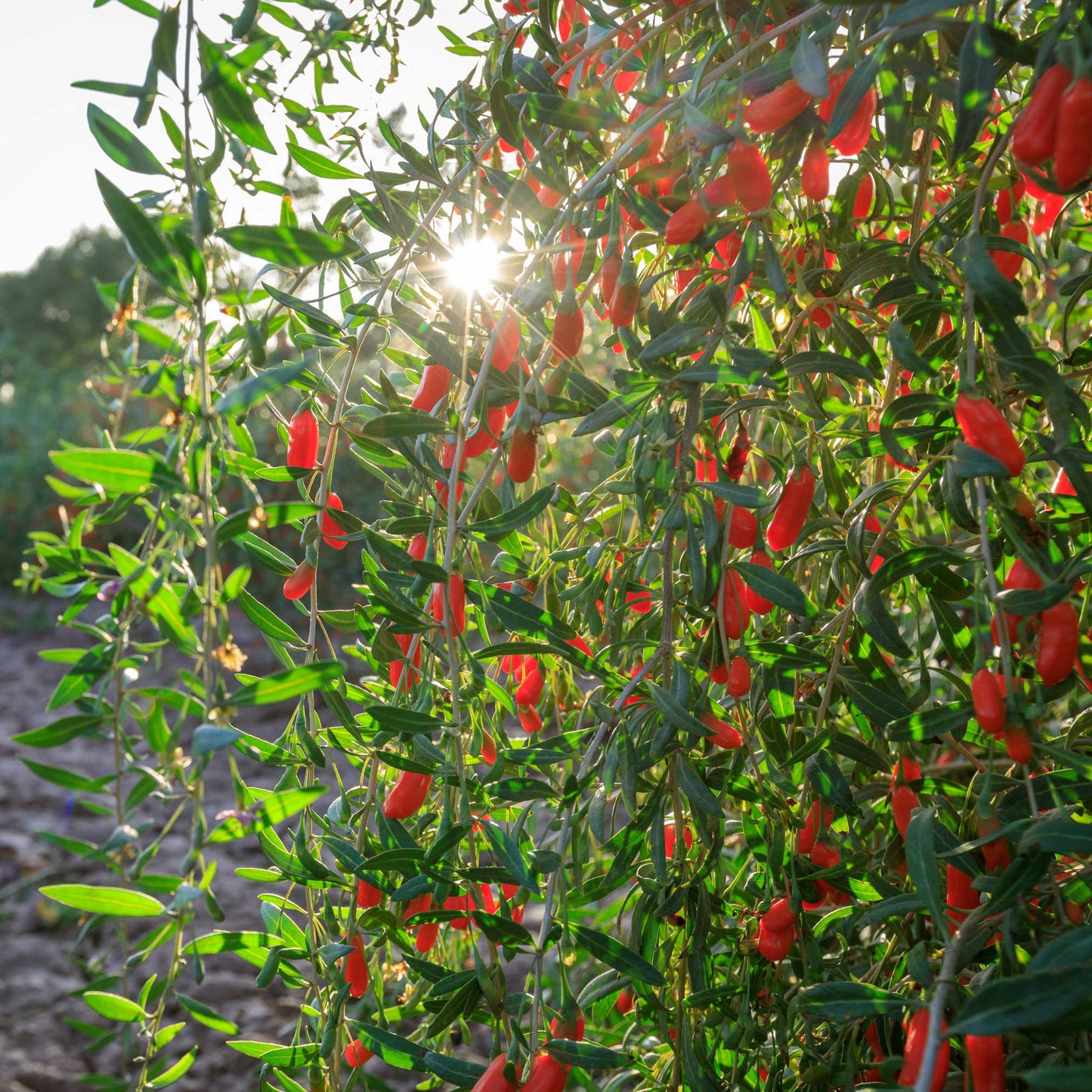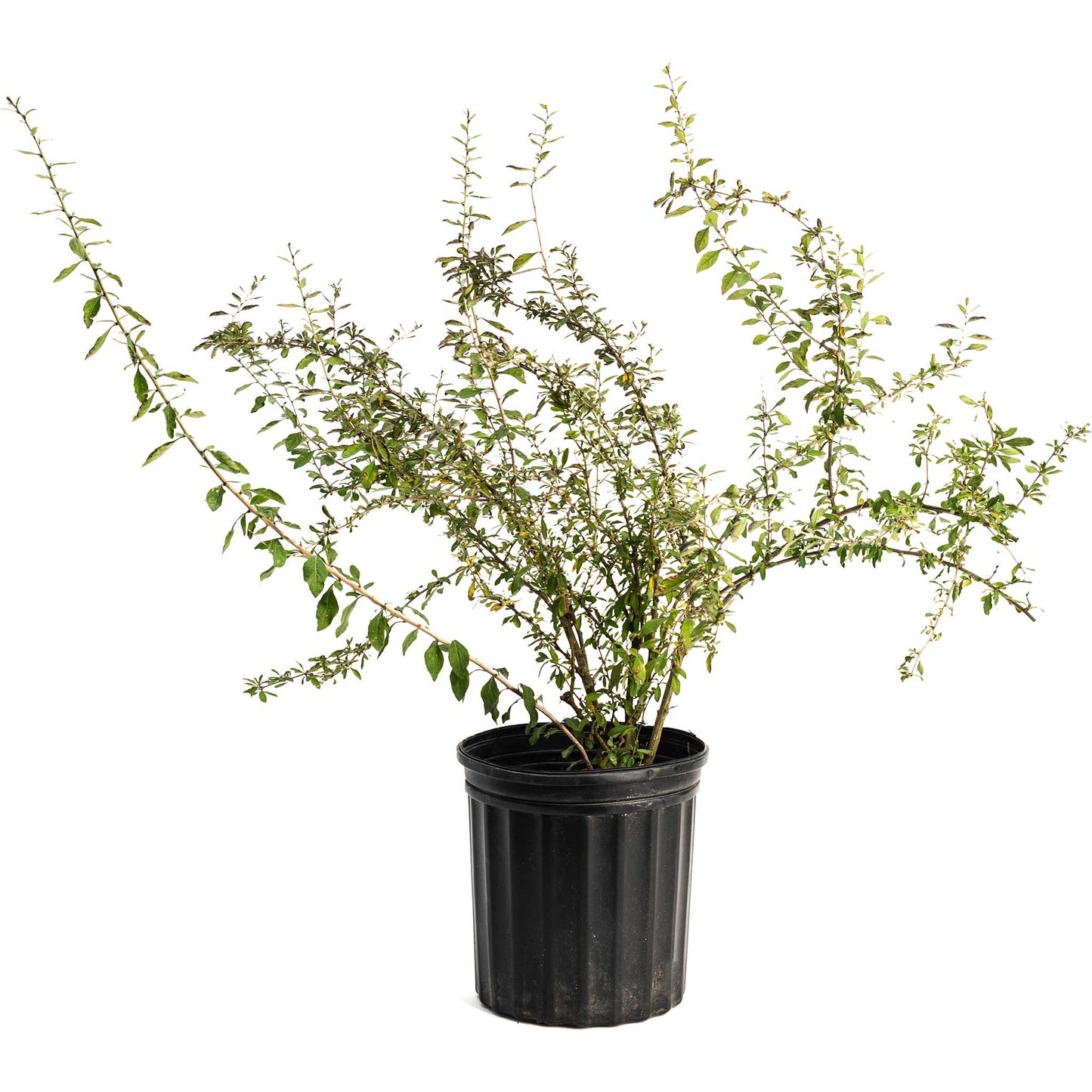Goji Berry
Goji Berry
SKU:EDB-BER-GOJ-NA-3G
Get Ready to Boost Your Garden's Fun Factor with Goji Berries!
Ever dreamt of a garden that's not just a feast for the eyes but a powerhouse of nutrition? Meet the Goji Berry plant, your new garden superhero! These vibrant berries are not only a blast of color in your backyard but also a burst of flavor for your taste buds.
Why Goji Berries?
- Easy to Grow: Whether you're a green thumb or a gardening newbie, Goji Berry plants are forgiving and adaptable, making them a breeze to grow.
- Drought Tolerant: Forget the stress of daily watering. These hardy plants can handle the heat, making them perfect for the busy or forgetful gardener.
- Year-Round Interest: From delicate purple flowers to juicy red berries, Goji Berry plants keep your garden looking lively through the seasons.
What's in it for You?
Not only do Goji Berries bring a playful pop of color to your outdoor space, but they're also a hit in the kitchen. Imagine whipping up your own superfood smoothies or healthy snacks right from your backyard bounty. Plus, they're a conversation starter – who wouldn't want to brag about their homegrown superberries?




Product Details
-
Product Category
Edibles
-
Product Subcategory:
Berries
-
Botanical Name:
Lycium barbarum
-
Does Not Ship To:
AZ, OR
-
Mature Height:
8-10 ft.
-
Mature Width:
4-6 ft.
-
Growing Zone:
5-9 outdoors
-
Indoor Growing:
-
Sunlight:
Full-Part Sun
-
Growth Rate:
Moderate
-
Harvest Time:
May - June
-
Bloom Time:
Spring to Summer

Planting Directions
<h2>Planting Goji Berry Plants</h2>
<ul>
<li>Choose a sunny location with well-draining soil.</li>
<li>Amend the soil with compost or aged manure to improve fertility.</li>
<li>Space plants about 2 meters apart to allow for growth.</li>
<li>Dig a hole twice the width of the root ball and just as deep.</li>
<li>Place the plant in the hole, spreading out the roots.</li>
<li>Backfill the hole, gently tamping down the soil to remove air pockets.</li>
<li>Water thoroughly after planting to settle the soil.</li>
<li>Mulch around the base to retain moisture and suppress weeds.</li>
</ul>
<h2>Care and Maintenance</h2>
<p>Water your goji berry plants regularly during their first growing season to help establish a strong root system. Once established, they are drought-tolerant but will produce better with consistent moisture. Fertilize with a balanced fertilizer in early spring. Prune in late winter to early spring to shape the plant and encourage new growth.</p>
<h2>Pollination</h2>
<p>Goji berries are self-pollinating, but having more than one plant can increase yield. Encourage pollinators by planting flowers nearby or allowing some weeds to flower.</p>
<h2>Harvesting</h2>
<p>Goji berries will begin to fruit in the second year. Harvest the berries when they turn bright red and are easily plucked from the branches. Regular harvesting encourages more fruit production.</p>
<p>Remember, gardening is a process of learning and adapting. Observe your plants and adjust care as needed. Happy gardening!</p>

FAQs
<h2>FAQs for the Goji Berries</h2>
<h3>1. How do I plant Goji Berry plants?</h3>
<ol>
<li><strong>Choose the Right Location:</strong> Goji berries need full sun and well-drained soil. They tolerate partial shade but produce less fruit in those conditions.</li>
<li><strong>Soil Preparation:</strong> Work compost or aged manure into the soil to improve fertility and drainage. A pH of 6.5 to 8 is ideal for goji berries.</li>
<li><strong>Planting:</strong> Space plants about 2 meters apart to give them room to grow. Dig a hole twice the size of the root ball, place the plant in the hole, and fill it with soil. Water thoroughly.</li>
<li><strong>Watering:</strong> Keep the soil consistently moist but not waterlogged during the first year to help establish the plants.</li>
<li><strong>Mulching:</strong> Apply a layer of mulch around the base to retain moisture and suppress weeds.</li>
</ol>
<h3>2. How do I fertilize Goji Berry plants?</h3>
<ul>
<li><strong>Initial Fertilization:</strong> After planting, fertilize with a balanced slow-release fertilizer to encourage growth.</li>
<li><strong>Annual Fertilization:</strong> Apply a balanced fertilizer or compost in early spring each year to support fruit production.</li>
<li><strong>Avoid Over-fertilization:</strong> Too much nitrogen can reduce fruit yield, so follow the recommended rates on the fertilizer package.</li>
</ul>
<h3>3. How do I ensure my Goji Berry plants pollinate and bear fruit?</h3>
<p>Goji berries are self-pollinating, meaning a single plant can produce fruit on its own. However, planting more than one goji berry plant can increase yield through cross-pollination. Encourage pollinators like bees and butterflies to visit your garden by planting a variety of flowering plants. Regular pruning also helps in improving air circulation and sunlight exposure, which can enhance fruit production.</p>
<h3>4. How do I harvest Goji Berries?</h3>
<ul>
<li><strong>Timing:</strong> Harvest goji berries in late summer to early fall when they turn bright red and are easily plucked from the branches.</li>
<li><strong>Method:</strong> Gently pull the ripe berries from the plant. Wear gloves as the stems can be thorny.</li>
<li><strong>Storage:</strong> Fresh goji berries can be stored in the refrigerator for up to 2 weeks. They can also be dried or frozen for longer storage.</li>
</ul>
<h3>5. How do I prune Goji Berry plants?</h3>
<ol>
<li><strong>When to Prune:</strong> Prune in late winter or early spring before new growth begins.</li>
<li><strong>How to Prune:</strong> Remove any dead or damaged branches. Thin out crowded areas to improve light penetration and air circulation. Trim back long branches to encourage bushier growth.</li>
<li><strong>Maintenance Pruning:</strong> Throughout the growing season, remove any weak or diseased stems to keep the plant healthy.</li>
</ol>
<p>Remember, patience is key when growing goji berries as plants can take a couple of years to start producing fruit. With proper care and maintenance, your goji berry plants can thrive and provide you with delicious and nutritious berries for years to come. Happy gardening!</p>





